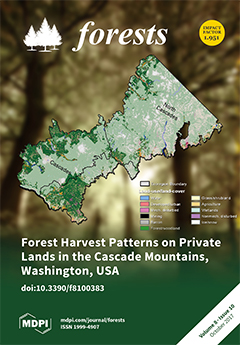Identifying the potentially suitable climatic geographical range for
Liriodendron chinense (
L. chinense) and predicting its responses to climate change is urgently necessary, as
L. chinense is an important tertiary relict tree species. In this study, we simulated the potentially suitable climatic
[...] Read more.
Identifying the potentially suitable climatic geographical range for
Liriodendron chinense (
L. chinense) and predicting its responses to climate change is urgently necessary, as
L. chinense is an important tertiary relict tree species. In this study, we simulated the potentially suitable climatic habitat of
L. chinense in China using maximum entropy (MaxEnt) modeling. We found that the MaxEnt model was highly accurate with an average training Area Under the Curve (AUC) value of 0.912. Annual precipitation and mean temperature of the driest quarter are the main factors controlling the geographical distribution of
L. chinense. Currently, the suitable climatic habitat of
L. chinense is mainly located in Southeastern China. Forecasted patterns of predicted suitable climatic habitat show a significant change by the 2050s and 2070s, suggesting that the suitable climatic habitat of
L. chinense would shift north with future climate change, based on four Representative Concentrations Pathways for carbon dioxide (CO
2) emissions. The southern extent of the current distribution would become unsuitable for
L. chinense, pointing to a threat of extinction and highlighting the urgent need for conservation within the next half century. The potentially suitable climatic habitat of
L. chinense was predicted to move further north, but those habitat gains may be inaccessible because of dispersal limitations. Our unique findings offer a climatic suitability map for
L. chinense in China, which can help to identify locations where
L. chinense may already exist, but has not yet been detected; to recognize locations where
L. chinense is likely to spread in the future given forecasted climate change; and to select priority areas for its introduction, cultivation, and conservation.
Full article





